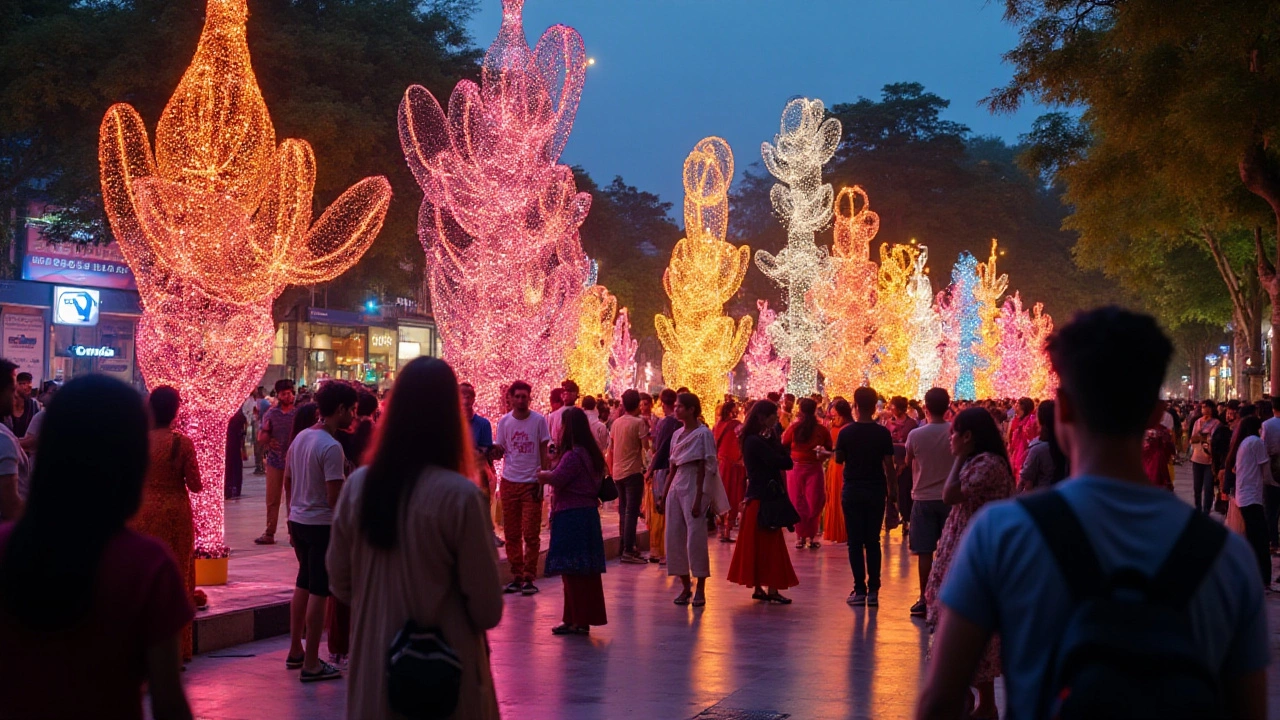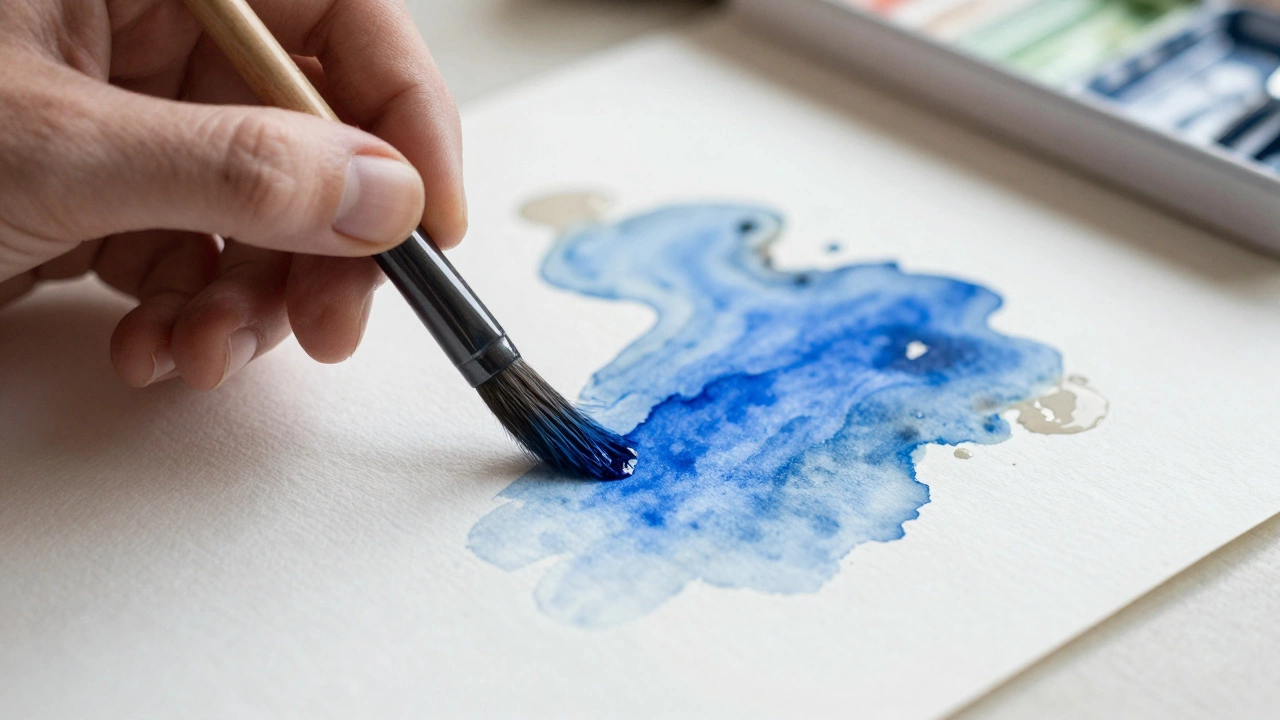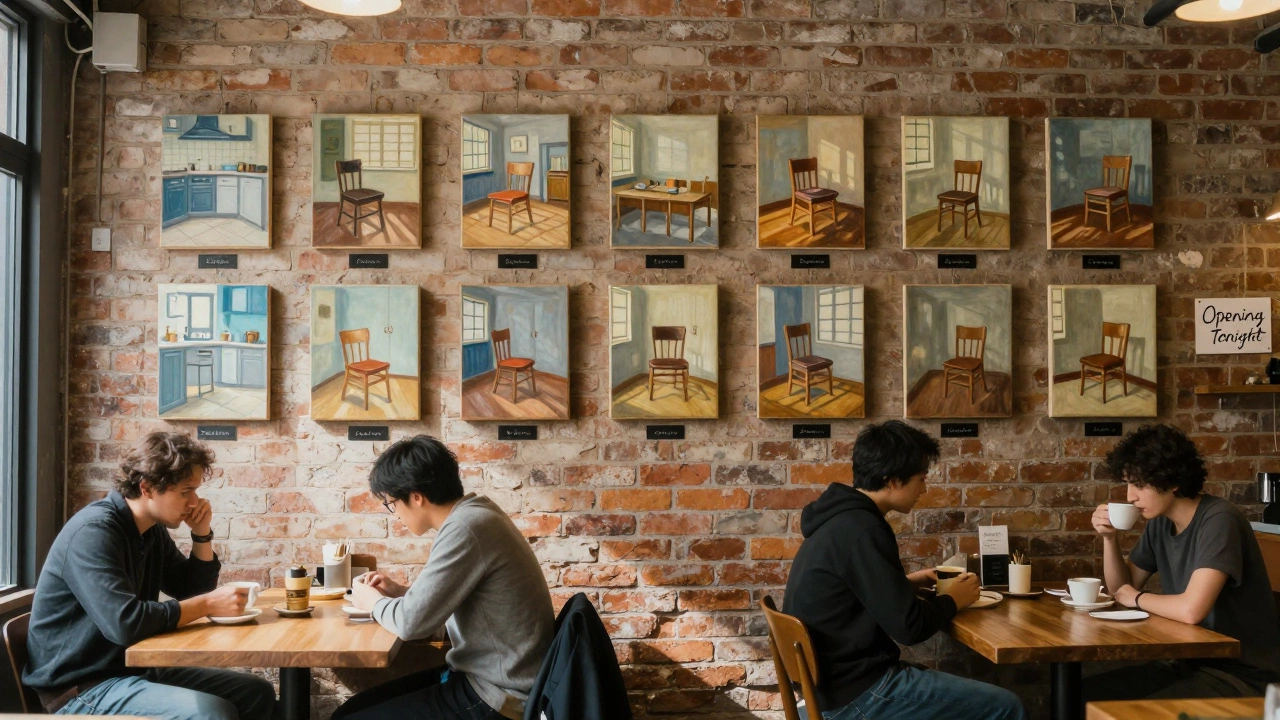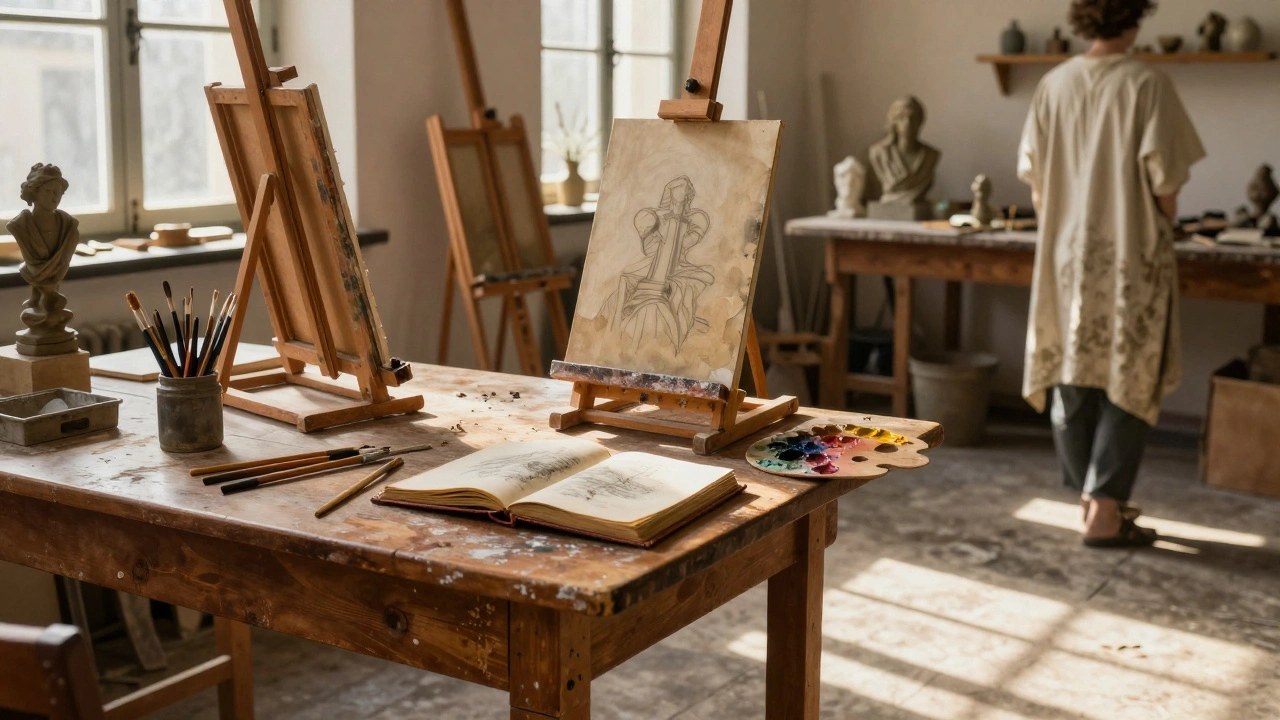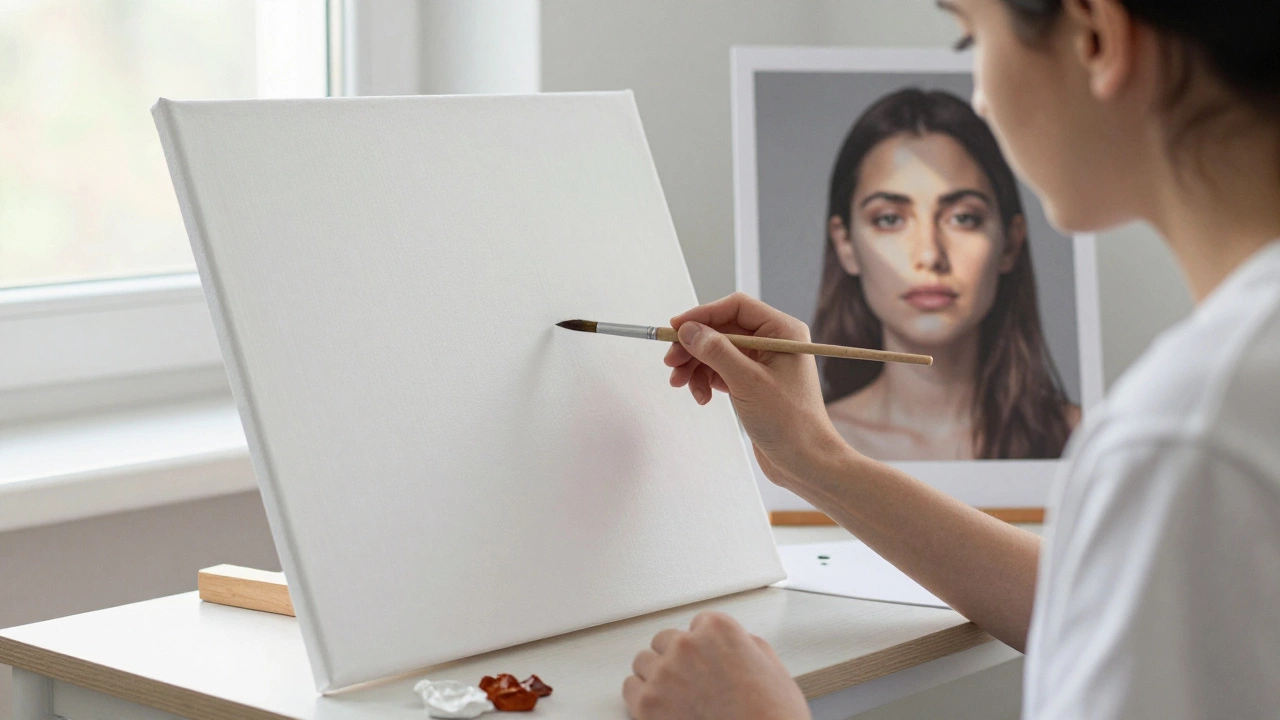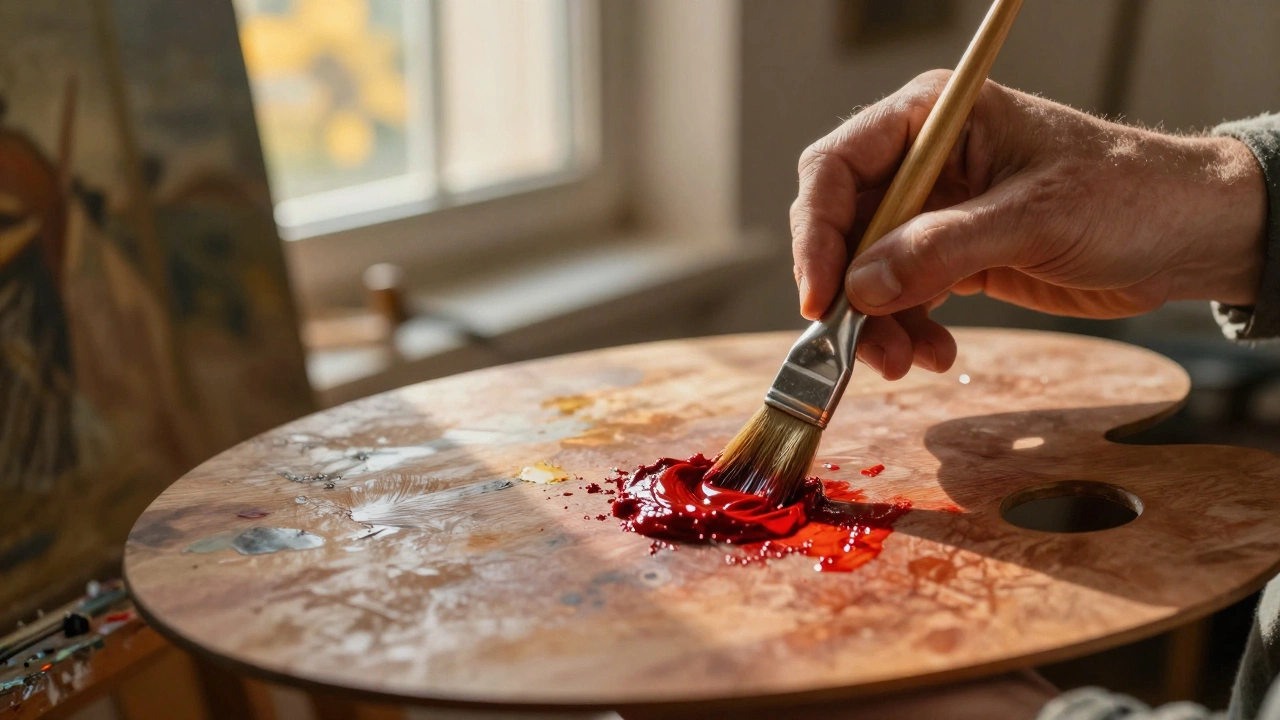Modern art offers an intriguing playground where imagination and reality intertwine in compelling ways. With its departure from conventional forms, it invites us to reimagine what art can be, allowing for a world of endless possibilities. This allure often captures the hearts of those who find beauty in the unpredictable and the unfamiliar.
Unlike the art of previous eras that might adhere to specific forms and subjects, modern art often focuses on intuitive and spontaneous expression. Artists delve into their personal visions, using innovative materials and techniques that can transform the mundane into something profound. This adventurous spirit resonates with audiences who appreciate the dynamic nature of contemporary creative expressions.
Understanding what draws people to modern art requires more than acknowledging its aesthetics; it demands an exploration of how it communicates with its viewers, triggering emotions and encouraging diverse interpretations. This engagement makes each encounter with modern art a unique experience, allowing individuals to forge personal connections within a shared cultural conversation. As modern art continues to evolve, it remains an inclusive space that welcomes all to contribute to its narrative.
- The Essence of Modern Art
- Breaking Away from Tradition
- Impact and Innovation
- The Role of Audience Interpretation
- Accessibility and Inclusivity
The Essence of Modern Art
The story of modern art is a journey through time that marks a revolution in how art was understood and appreciated. Breaking the shackles of tradition, it brought forth a myriad of styles and movements, each a beacon of new perspectives. From Impressionism to Abstract Expressionism, modern art defies easy categorization. The core of these movements shares one thing: a deeply personal expression of the artist's worldview. It's as if each stroke of the brush or chiseling of marble captures a heartbeat, a profound moment or thought frozen in time.
Take Pablo Picasso, for example; his audacious work shattered norms with his pioneering style. His piece "Les Demoiselles d'Avignon" marked a radical departure from the traditional linear perspective, embodying the birth of Cubism. It stirred a revolution in artistic techniques and stirred conversations about what art's role should be. As Picasso himself once mused, "The purpose of art is washing the dust of daily life off our souls." Modern art serves as that quintessential cleanser, stripping away preconceived notions and refreshing the spirit.
Modern art's transformative nature is seen in its rejection of realism and embrace of abstraction. This act of letting go of detailed representation allows a more emotive and subjective storytelling. The beauty of a piece like Jackson Pollock's "Number 5, 1948" lies not just in the chaotic splashes of paint but in the visceral reaction it evokes from the viewer. It invites interpretation, each individual finding a unique meaning that resonates with personal experiences, fulfilling an unspoken promise of emotional engagement. This ability to foster personal connections is part of what makes modern art eternally appealing.
The dialogue between artist and audience becomes a dynamic exchange of ideas, which is another pivotal aspect of modern art. It challenges not only artistic boundaries but also societal ones. Art movements such as Dadaism emerged as reactions against prevailing social structures of the time, often using absurdity as a tool for critique. Artists drew inspiration from the shifting landscapes of politics, wars, and innovation, creating pieces that were not just aesthetically compelling but socially relevant.
The accessibility of modern art broadens its scope, crafting a cultural tapestry that pulls from global influences. This inclusivity and diversity of voices mirror the complex societies they emerge from, painting vivid cultural narratives that instruct, inspire, and sometimes unsettle. It is this very fluidity, the ability to contain multitudes within its frame, that draws viewers into a deeper appreciation. Whether it's the captivating minimalism of Agnes Martin or the provocative installations of Yayoi Kusama, modern art's power lies in its infinite forms and interpretations.
Breaking Away from Tradition
The realm of modern art is a universe unto itself, one that deliberately disentangles itself from the constrictions of bygone aesthetics, making way for creativity unbound by past paradigms. In essence, it involves a bold departure from the aesthetic and thematic norms that once dictated the art world. Traditionally, art was bound to the altar of realism, where artists sought to replicate the world as it appeared. However, the advent of modern art, sparked by movements such as Impressionism and Cubism, changed this narrative dramatically, allowing artists to explore subjective realms and intangible emotions.
The shift began in the late 19th century, spearheaded by visionaries who saw art not just as a mirror of nature but as a reflection of internal landscapes and abstract concepts. This metamorphosis was not a mere aesthetic choice but a response to a rapidly changing world brimming with industrial advancements and philosophical transformations. Artists like Pablo Picasso emerged, bravely eschewing conventional techniques in favor of daring abstraction. Picasso’s fracture of form in Cubism captured the chaotic rhythm of modern life, reflecting a world where reality was less static and more fragmented.
"Art is a lie that makes us realize the truth," Picasso famously noted, encapsulating the ethos of modern art in one concise phrase.
Such metamorphoses invited artists to ponder how a canvas could become a realm for exploration rather than mere representation. Expressionists, for example, used color and form to capture and evoke emotion, leading audiences to perceive the world not literally but through the prism of human experience. Contemporary works further delve into the depths of psyche and concept, where an artist's intent becomes just as vital as the work itself. This shift in approach not only challenges the viewer's perception but also liberates the artist from previous confinements.
The journey away from tradition extends beyond the tangible elements of art to its purpose and intention. With technological advances, art has embraced mediums like digital installations and interactive platforms, crossing borders that once seemed impenetrable. In today's gallery spaces, boundaries between artist and audience have blurred, redefining art as a participatory experience. Such innovations haven given rise to the idea that art should not only be observed but absorbed, questioned, discussed, and even disassembled. This dynamic interchange is at the heart of why art appreciation has expanded and evolved alongside contemporary advancements.
As the 21st century unfolds, the essence and appeal of breaking away from tradition remain ever-potent. By challenging norms and fostering innovation, modern art has become a voice not only for individual expression but also for collective cultural dialogues, questioning assumptions and offering new visions of human experience. This relentless drive to innovate ensures that modern art remains vibrant, pushing boundaries and continually redefining itself as society evolves. As people engage with modern art, they are invited into a vast conversation that bridges eras, thoughts, and dreams, continually inspiring fresh perspectives and fostering a deep, collective appreciation.
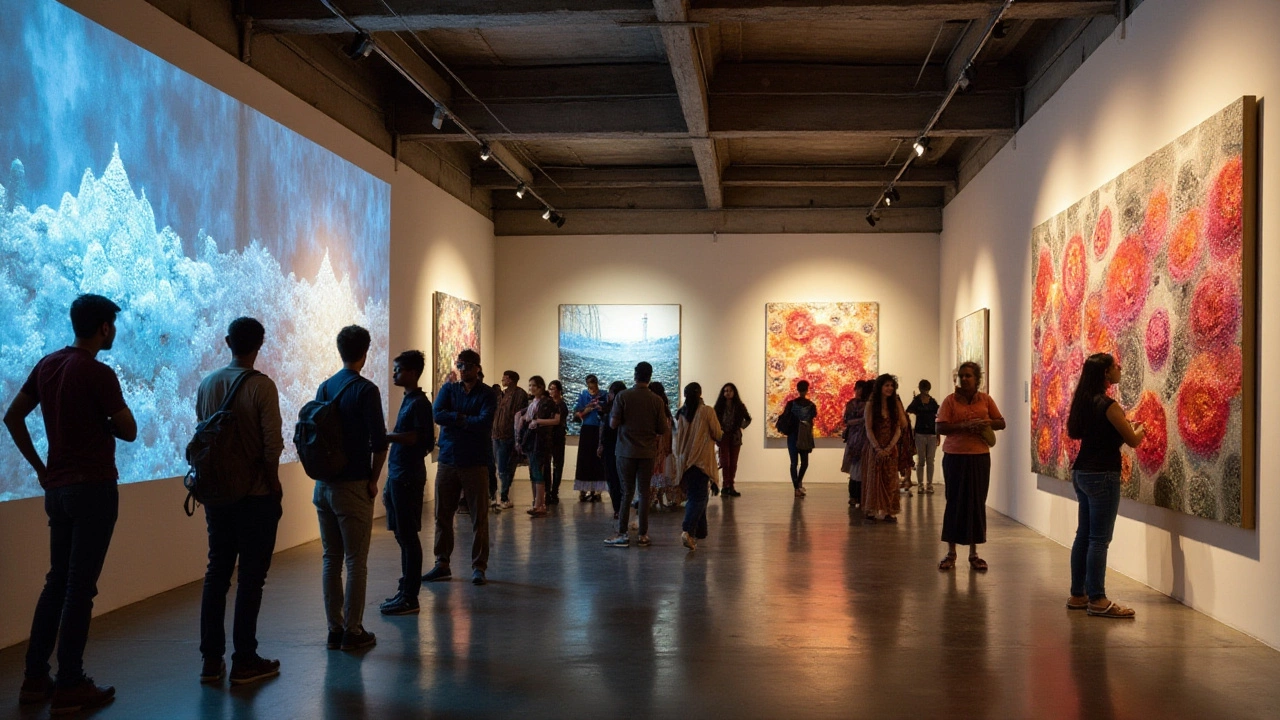
Impact and Innovation
The world of modern art thrives on its dual nature of impact and innovation. It constantly evolves, mirroring the transformations of the societies it originates from. The influence of modern art is far-reaching, shaping not just the cultural landscape but also influencing social discourse, technology, and even economics. By breaking conventional limits, it has given space for artists to propose innovative ways of thinking and seeing the world.
Modern art often incorporates an array of new mediums. This includes combining traditional methods with avant-garde materials like digital media, recycled materials, and complex multimedia installations. These innovations allow artists to push their ideas beyond two-dimensional planes, crafting immersive and interactive experiences that engage all senses. A profound example is the work of Yayoi Kusama, whose infinity rooms have entranced global audiences with their boundless reflections and immersive quality, creating a surreal experience that challenges perceptions.
In the context of social impact, modern art serves as a vessel for expressing and critiquing societal norms and pressing issues. Artists such as Ai Weiwei have used their art to challenge political regimes and highlight human rights issues, proving that art can be a formidable force for change. Such works demonstrate how modern art can influence public opinion and even policy by shedding light on uncomfortable truths that are often ignored in mainstream dialogues.
Statistics reflecting the economic impact of modern art suggest lucrative prospects. According to the UBS Art Market Report, in 2023, the global art market's value reached $67.8 billion, with modern and contemporary art representing a substantial segment. This figure underscores the increasing demand and investment in modern art as a driver of cultural and economic activity. With growing public and private investments, modern art continues to play a vital role in urban redevelopment, often leading the way in gentrification projects, transforming old industrial spaces into creative hubs.
"Art is not a thing; it is a way," asserted Elbert Hubbard, encapsulating the movement of modern art beyond static expression towards an experiential journey.
Innovation in contemporary works isn't just about what is created; it's also about how audiences interact with it. The rise of virtual reality (VR) and augmented reality (AR) in the art world has opened new doors for experiencing art, allowing for immersive engagement that was previously impossible. This technological advance signifies a new era where art enthusiasts can explore galleries from the comfort of their homes. It redefines viewership and accessibility, ensuring that modern art reaches a broader and more diverse audience than ever before.
The Role of Audience Interpretation
One of the most fascinating aspects of modern art is how it invites audience participation not just as viewers but as co-creators of meaning. Unlike artworks that have a definitive story or a clear subject, modern pieces often leave space for the audience's imagination, becoming a mirror reflecting the viewer's own experiences, emotions, and thoughts. By embracing more abstract and symbolic forms, modern art turns the gallery or exhibition space into a dialogue between artist and audience. This dialogic nature is part of the appeal, as no two people may walk away with the same interpretation, making each encounter uniquely personal and deeply engaging. Whether it’s through abstraction, bold use of color, or thought-provoking installations, modern art challenges audiences to look beyond the surface and delve into their interpretations.
Modern art encourages viewers to engage with it dynamically, often inspiring discussions and debates. This interaction melds art appreciation into a shared experience, with conversations flowing between viewers and occasionally even with the artists themselves if the opportunity arises. As art appreciation becomes more participative, it shifts from passive observation to active involvement, providing a richer experience that isn’t merely about seeing but understanding oneself through art. Someone viewing a Jackson Pollock might find chaos where another sees order, each uncovering sentiments influenced by personal history and societal context. This multifaceted interpretation is key to the modern art experience.
The flexibility in interpretation that modern art offers is not just a contemporary phenomenon but extends back to avant-garde movements that questioned the status quo. An artist like Marcel Duchamp transformed everyday objects into art, prompting viewers to consider concepts of originality and value. In doing so, he opened a Pandora’s box where spectators had to stretch their imagination to understand the art’s intent. In many ways, it democratizes art appreciation, granting audiences the freedom to formulate their perspectives without needing extensive art historical knowledge.
Art critic John Berger famously stated, "The relation between what we see and what we know is never settled," capturing the essence of art’s evolving narrative with its audience.
Moreover, contemporary artists often employ interactive or multimedia elements to engage viewers more deeply. This method creates an environment where art is no longer a static object but a living experience. Installations like Yayoi Kusama’s Infinity Mirrored Rooms envelop visitors in immersive, mesmerizing environments that render the observer an integral part of the artwork. Such experiences encourage people to interpret these works actively, often leading to a personal transformation or a shift in perspective. The fusion of audience interaction with artistic presentation makes each piece not just a viewing experience but a moment for introspection, exploration, and often a step into the unknown.
An interesting aspect to consider is how technology complements audience interpretation. With the advent of virtual reality and augmented reality in art exhibitions, artists can create spaces beyond the physical limitations of traditional art forms. This integration of technology enables an unprecedented level of personalization in how art is perceived. The modern viewer can explore a piece’s several layers, sometimes interacting with it in novel ways that were previously unimaginable. This modern approach adds yet another layer to the variability in interpretation, making each encounter with contemporary works uniquely tailored to the individual's interaction with the technology-enhanced piece.
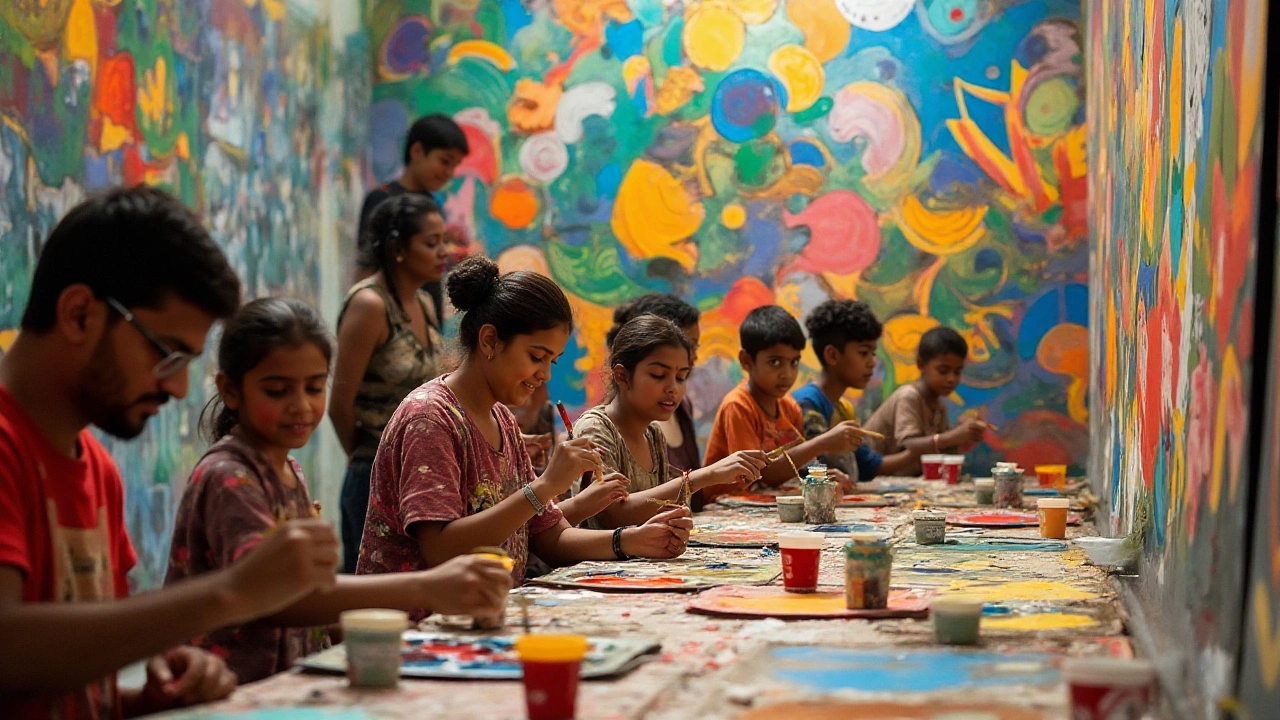
Accessibility and Inclusivity
One of the most fascinating aspects of modern art is its ability to break down barriers, making art more accessible and inclusive to wider audiences. Historically, art galleries and museums were often seen as exclusive spaces, catering to a select few. However, the tide began to turn with the rise of modern art, which brought with it a spirit of openness and universality. Modern art movements like Abstract Expressionism and Pop Art challenged not just artistic norms, but social ones as well, inviting everyone to participate in the conversation.
In today's world, artists use technology and social media to reach audiences far beyond the traditional walls of a gallery. This shift has transformed the art world into a more democratic space, where anyone with an internet connection can experience and interact with artistic expression. Online platforms like Instagram and virtual museum tours have allowed modern artworks to grace devices globally, creating a new kind of accessibility that transcends physical boundaries.
Another crucial aspect of accessibility in modern art is the increasing representation of diverse voices. Artists from varied backgrounds bring their unique perspectives to the table, challenging stereotypes and giving a voice to those previously marginalized. This diversity is celebrated and reflected in the themes and subjects explored in modern art, fostering a sense of belonging among a wider demographic. A noteworthy example of inclusive art initiatives is the Black Lives Matter mural movement, which has utilized public spaces as canvases to highlight issues of racial justice.
Moreover, artists and institutions have grown more cognizant of the needs of individuals with disabilities, ensuring that art is an experience accessible to everyone. Efforts such as providing audio guides, tactile art installations, and sign language interpretations at exhibitions demonstrate a commitment to inclusivity. With these developments, modern art acts as a bridge, connecting people from various walks of life and allowing them to explore the cultural threads that unite us all.
"Art should disturb the comfortable and comfort the disturbed," said Banksy, capturing the essence of how modern art can challenge perceptions while making sure no one is left out of the conversation. This sentiment underscores the importance of creating art spaces that reflect society's diversity, inviting dialogue and introspection among viewers.
Lastly, the open-ended nature of contemporary works in modern art encourages viewer interaction and interpretation, blurring the lines between artist and audience. By welcoming all interpretations and insights, modern art nurtures an inclusive environment where each person's perspective is valued. This participatory approach further entails that everyone, irrespective of their background or art education, can partake in the joy of creating and understanding art.
